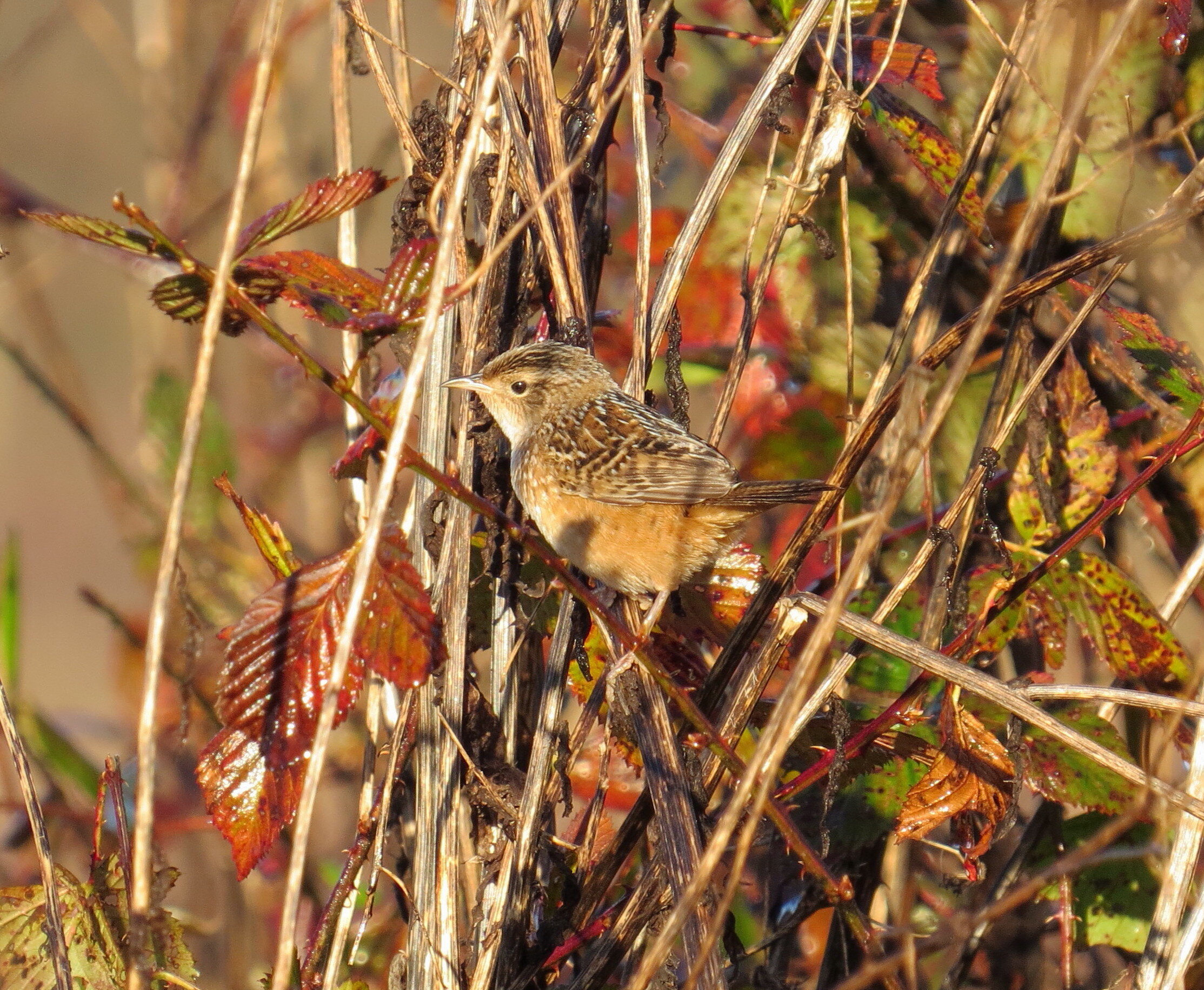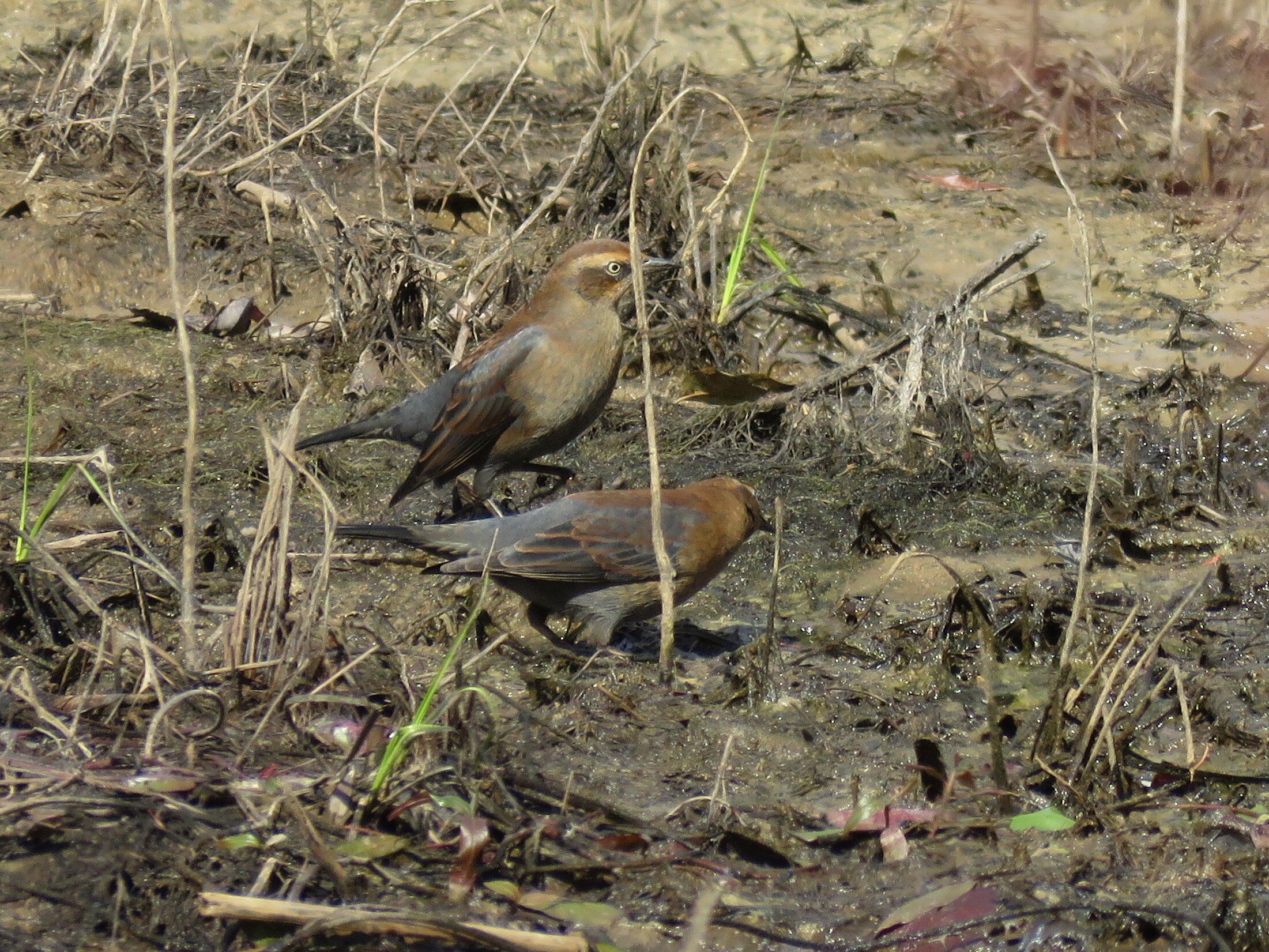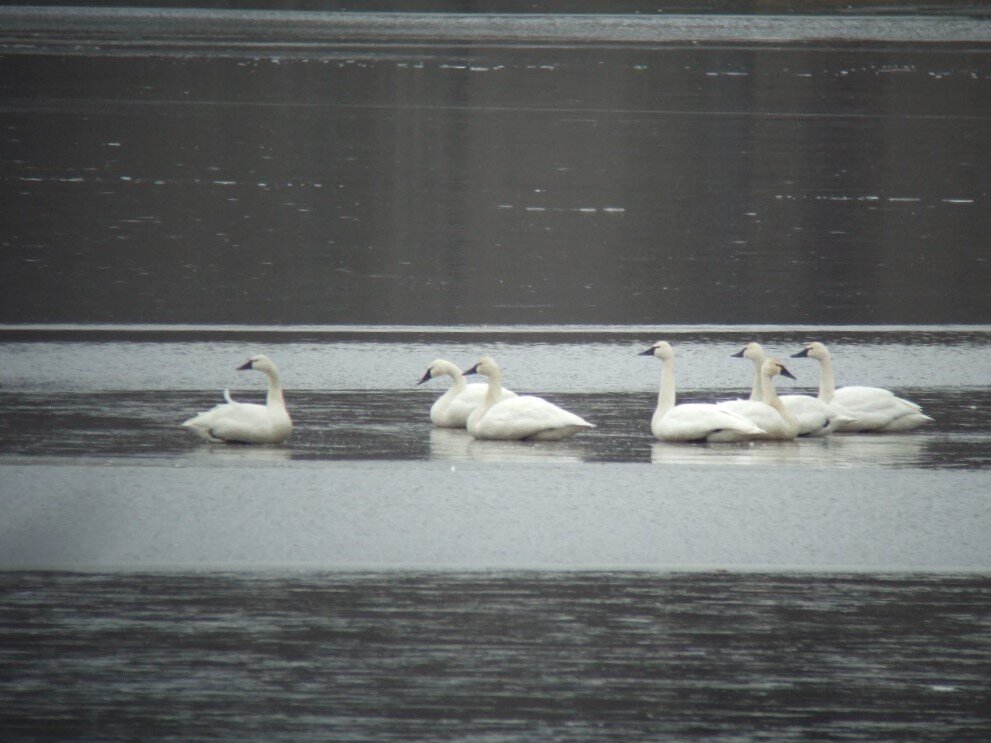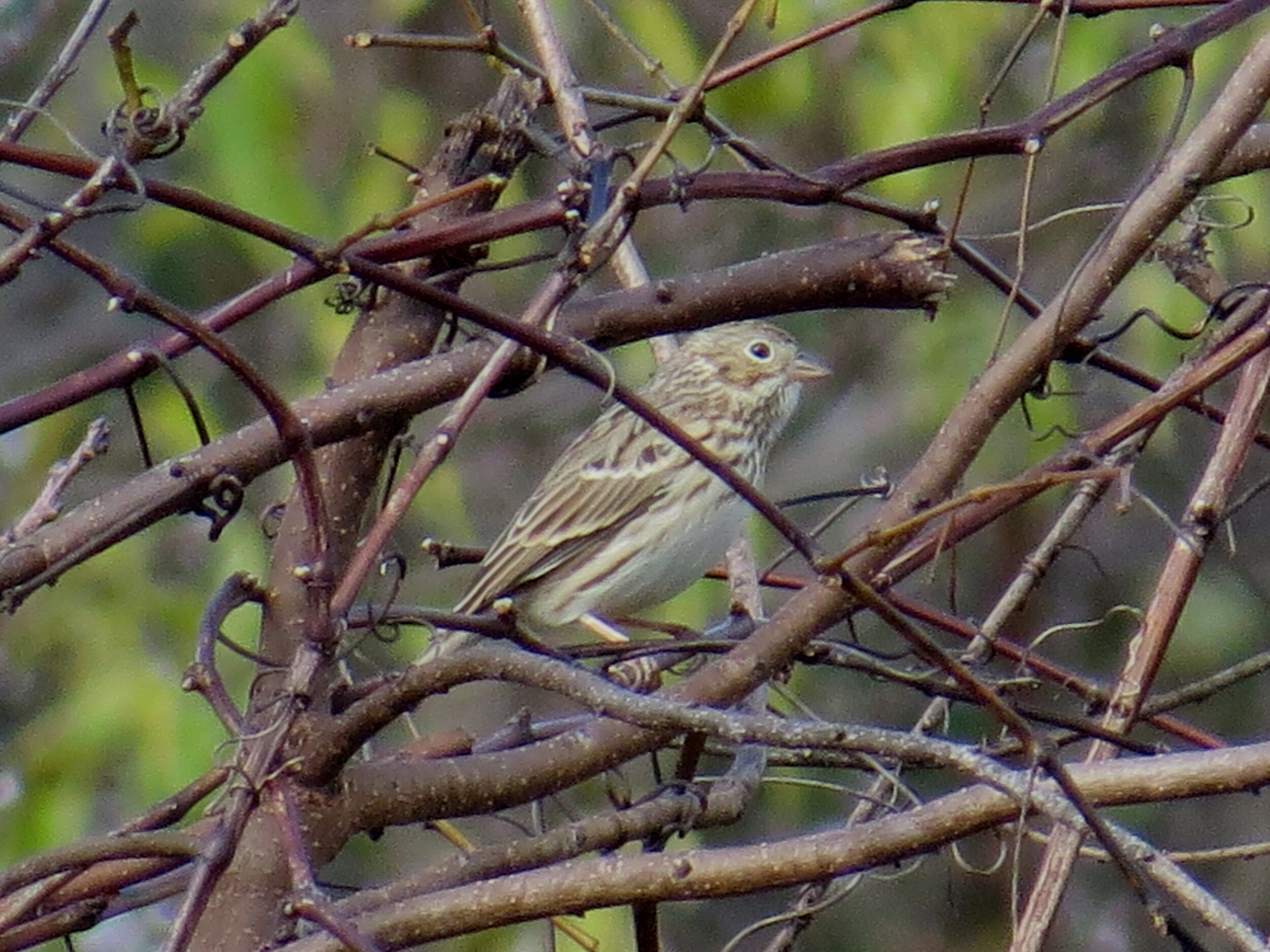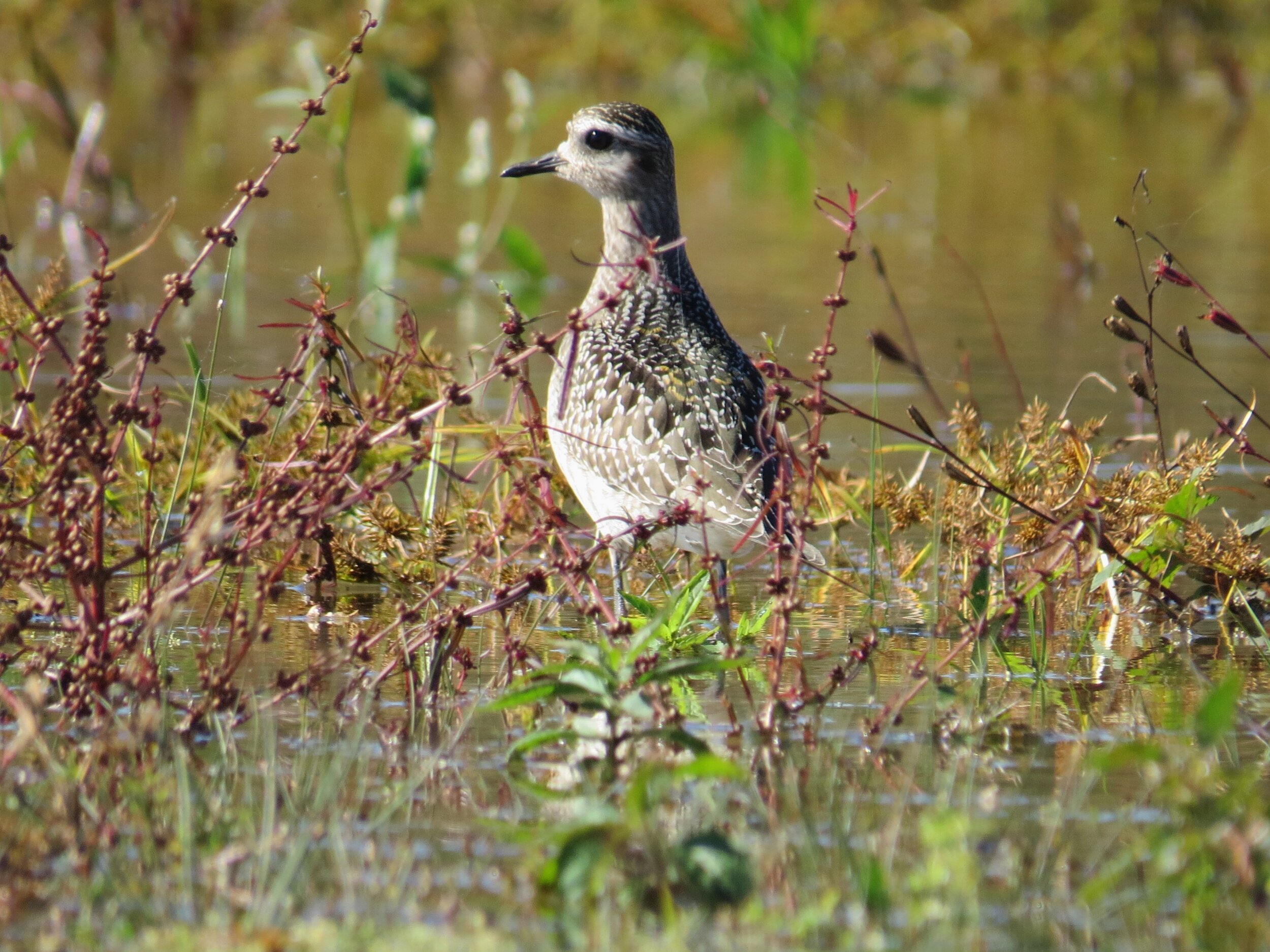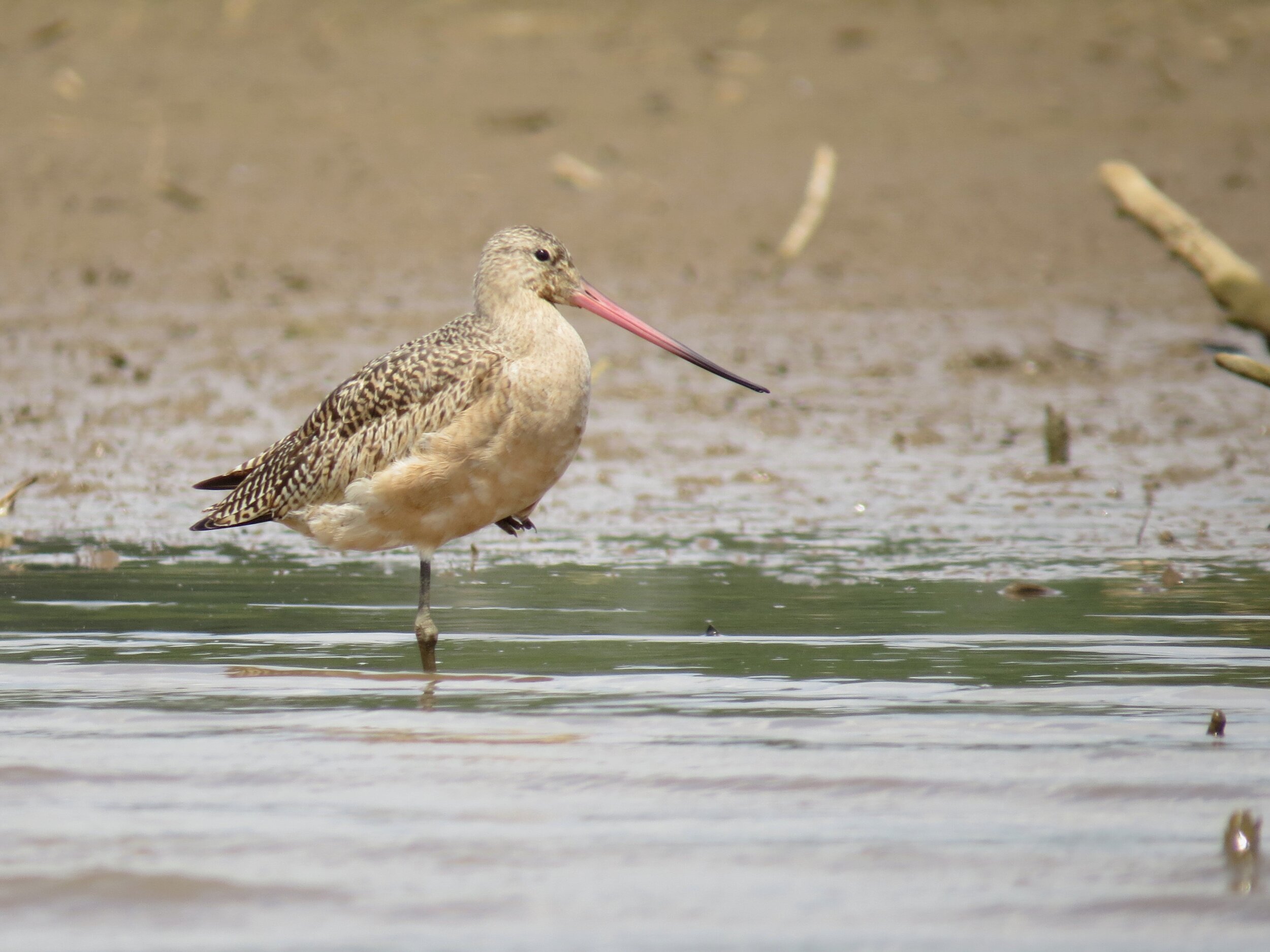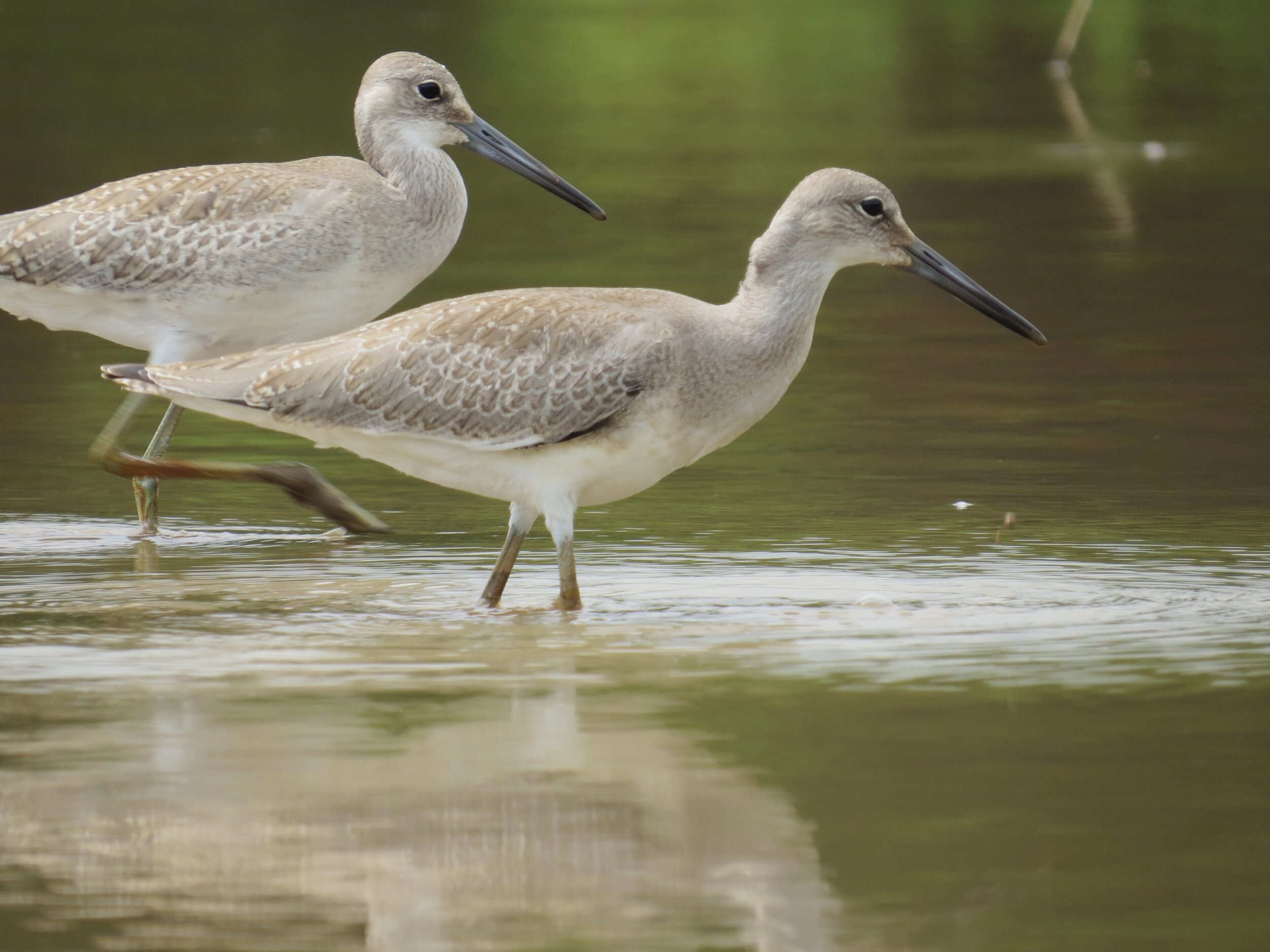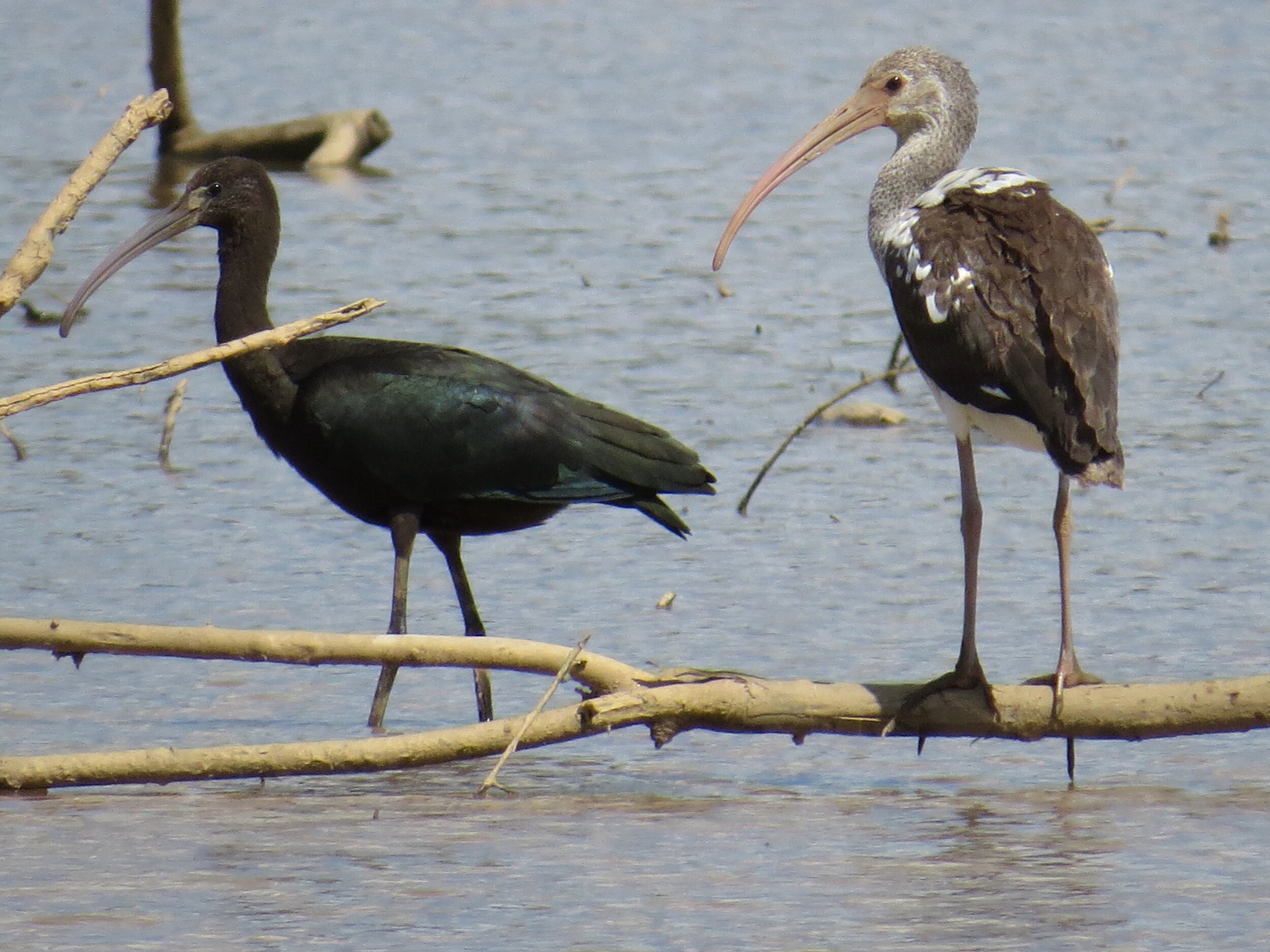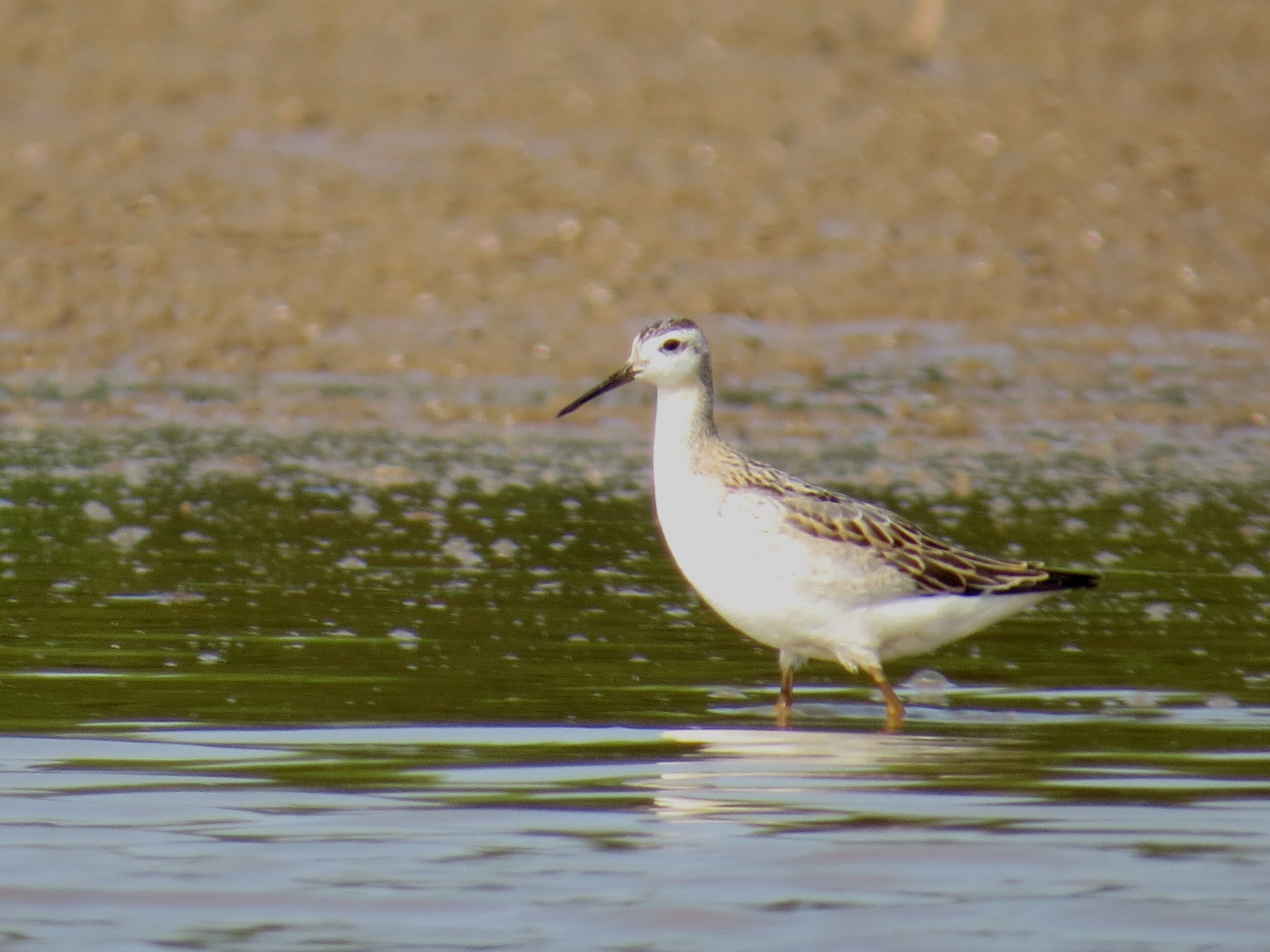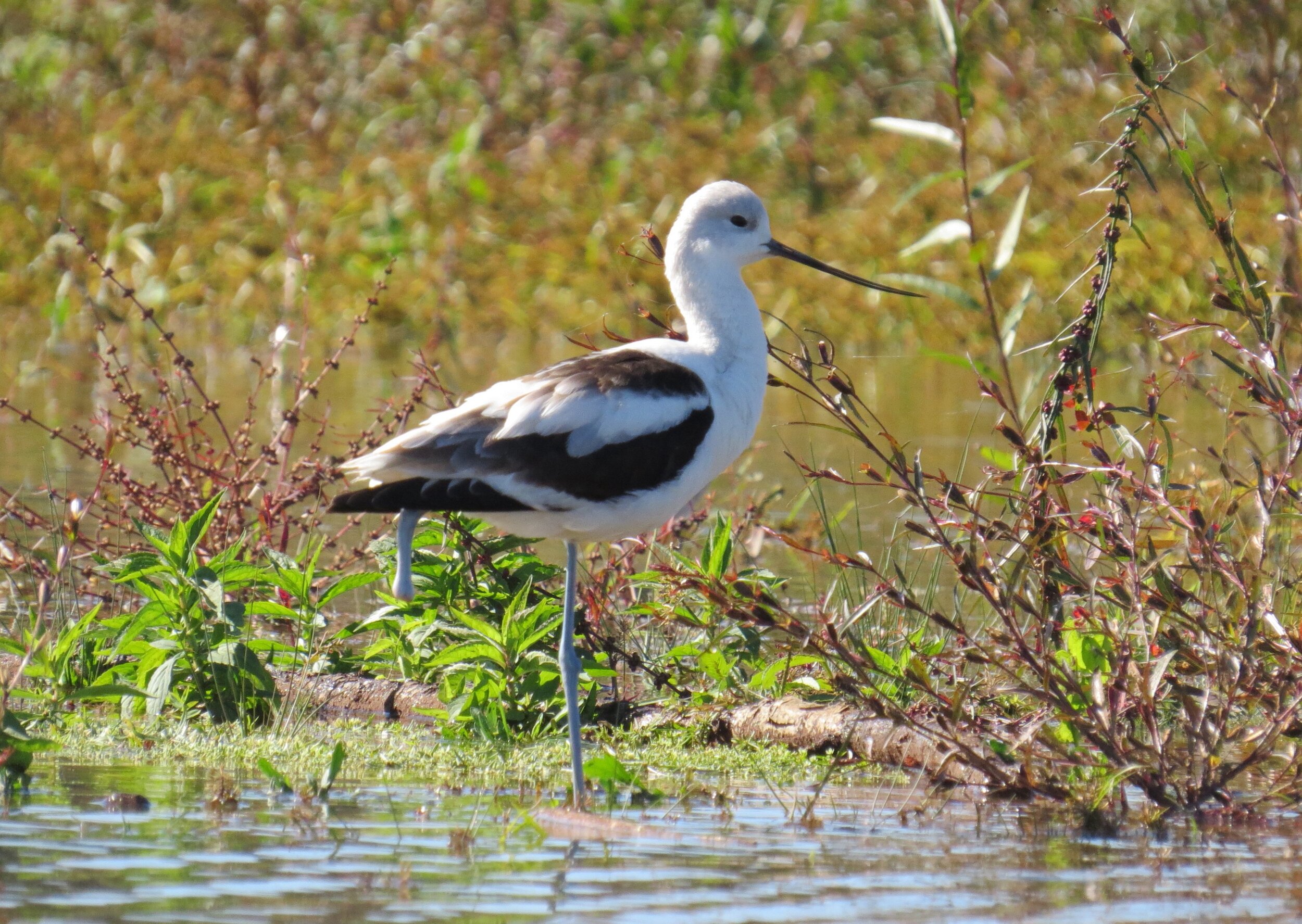Dick Cross Wildlife Management Area can be reached via U.S. Route 58 between Boydton and South Hill, and then by taking State Route 4 south. Go about 5 miles to the management area entrance on your left. The area’s 1,400 acres are primarily open upland, maintained as old fields or cultivated to benefit wildlife. There are also a few wetlands on the property highlighted by Clyde’s Pond which is at the very end of the road that traverses the WMA. Park here and walk out to the large blind above the marsh. Here you will have a bird’s eye view of the marsh. This is a good vantage point to spot waterfowl in winter and to watch for gulls, hawks and eagles as they fly by. After spending time at the blind, feel free to walk down the path to the marsh. There is no set way to bird this area but you should carefully check the marsh edges and with a pair of good rubber boots, you can even walk into the marsh part ways. Both Marsh and Sedge Wrens and American Bittern have been found here in the fall. In winter, there are often Wilson’s Snipe hiding in the marsh. Also in winter, Rusty Blackbirds have been occasionally found here in good numbers. In spring and summer, the sounds of Indigo Buntings, Blue Grosbeaks, Prairie Warblers and Yellow-breasted Chats are all around you. One July day, there was an adult Yellow-crowned Night-Heron stalking prey in the marsh so you never know what you might see. Fall and winter bring back loads of Song and Swamp Sparrows. Especially in fall, sparrows like Lincoln’s, Vesper and even rarer species should all be looked for. White-crowned Sparrows are scarce but can be seen occasionally.
After spending time in and around the marsh, you can keep walking west on the back side of the marsh thoroughly working all the edges and hedgerows as you move along. Eventually, you will come to a path that will take you north through the woods and back to the entrance road that you can follow east back to your vehicle. The other option after birding the marsh itself is to follow paths east that will take you through a gate and to a loop trail that leads to another marsh that is not nearly as open as Clyde’s Pond. This can be a good area to check in spring for migrating warblers, flycatchers, etc. One spring there was a Least Bittern calling continuously from this marsh but it could not be spotted visually due to the thick cover. The drawback to visiting this particular area is that it’s usually overgrown and may take a serious amount of bushwhacking to access. Over the years, Clyde’s Pond has hosted a number of scarcer species depending on season and water levels including multiple Little Blue Herons, White and Glossy Ibis and even a Snowy Egret. Shorebirds can sometimes be found in migration if water levels have receded, exposing open muddy areas. Some of the shorebirds that have been seen here include Semipalmated Plover, Dunlin, Pectoral, Solitary, Spotted, Least, Semipalmated and Western Sandpipers as well as both yellowlegs. Pied-billed Grebes have bred here sparingly in the past.
Moving on from Clyde’s Pond, there is another less productive wetland that can be accessed by parking next to the horse barns and silo that are adjacent to numerous dog kennels. There is a path that leads you north from this area to a fairly large open wetland. Many days there is nothing on the water but in winter sometimes there are several duck species. Tundra Swans have been seen here in winter. The most likely species you will encounter is Ring-necked Duck but scope the area carefully for other species in and amongst the vegetation. This is another area that you can explore to your heart’s content. The woodland around this area can be good for migrating warblers in spring and fall. When you return to your car, depending on the season, you should encounter bluebirds, swallows, Chipping and Savannah Sparrows and Eastern Meadowlarks in the nearby fields.
There are so many more areas on this vast property to explore. Get off the beaten path, walk through the woods, check as many hedgerows as you want, there are so many to check. You could spend all day in here and hardly cover it all so just enjoy and do what you can. You will not go unrewarded.
Note: Things to be aware of include hunting, field dog trials and ticks. In the fall, hunting is very popular at Dick Cross, especially deer hunting. During the deer hunting season, it is best to avoid going in there except on Sunday when hunting is prohibited. After the hunting season is over, the property becomes popular with groups that run field trials with their bird hunting dogs. Although there is no actual hunting going on, the place can become pretty crowded, especially at the kennel area, with horses, dogs and people. Although this is a harmless activity, you may find it somewhat noisy and it may distract you from your birding. Finally, if you are walking around the fields in the warmer weather it always wise to wear insect repellent. Ticks of all kinds are present on the property. Sticking to mowed and dirt paths is the best way to avoid becoming a host.
Accessibility: A valid WMA access permit is required to visit any Wildlife Management Area in Virginia.
Owner/Manager: Virginia Department of Game & Inland Fisheries
eBird Hotspot: Dick Cross WMA
eBird Sub-Hotspots: Clyde's Pond
—Adam D’Onofrio

